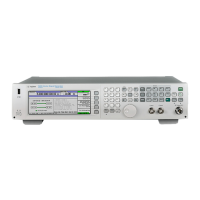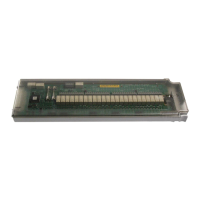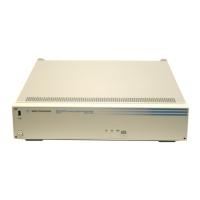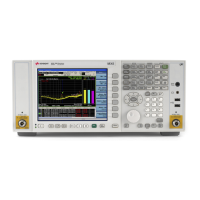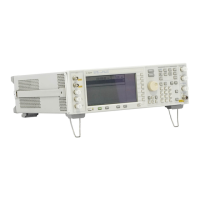Pulse Modulation
deviation is no longer limited by the FM rate, only by the maximum
limit of 8 MHz.
Pulse Modulation
Pulse mo dulation can be accepted from an external source at the
PULSE connector or can be internally generated. The damage levels
of the PULSE input are +10 and
0
5 V DC. The input imp edance is
50 . A function generator must b e capable of driving TTL levels
into a 50 load. With no input signal, the pulse input is held low,
so activating pulse with no input causes RF output to shut o.
The swept signal generator can also pro duce a 27.778 kHz square
wave for use in Agilent scalar network analyzers. Swept signal
generators with Option 002 internally generate a synthesized pulse.
The swept signal generator provides internal pulse mo dulation with
pulse widths adjustable with 1
s resolution (adjustable with 25 ns
resolution with Option 002).
Leveling
Pulse leveling performance depends on the accuracy of the dio de
detector which measures the RF amplitude. The ALC blo c
k diagram,
Figure M-4, shows the pulse mo dulation input signal to the sw
ept
signal generator which controls a pulse mo dulator. The pulse input
is represented by trace 1 in Figure M-5. The pulse mo dulator is
either full on or full o. The amplitude, when the pulsed RF is on,
is controlled by the linear mo dulator used for CW leveling and AM.
Trace 2 is the resultant RF pulse, which is the RF output. This pulse
is detected by the dio de detector. It trails the pulse input b ecause of
propagation delays in the pulse mo dulator and its driv
e circuits.
The output of the detector is amplied by a logarithmic amplier
(log amp).
Trace 3 is the output of the log amp. Note that this signal is
delayed from the RF output signal and that the rise time is slower.
This is a result of the bandwidth of the detector and the log amp.
The amplitude of trace 3 is summed with the reference signal
from the level DAC and the dierence (error) signal drives an
integrate{and{hold circuit. The integrator output drives the RF
output p ower level via the linear mo dulator. When the sum of the
detected and reference signals is 0 volts, the output of the integrator
is held at a constant level and the RF output is leveled.
Trace 4 is the delayed signal from the pulse input which controls the
switch in the integrate{and{hold circuit. Trace 4 is timed to coincide
with trace 3. Since the integrate{and{hold switch is closed only when
trace 3 is high, the integrator responds to correct the p ower level
only when the RF power is on.
Operating and Programming Reference M-19

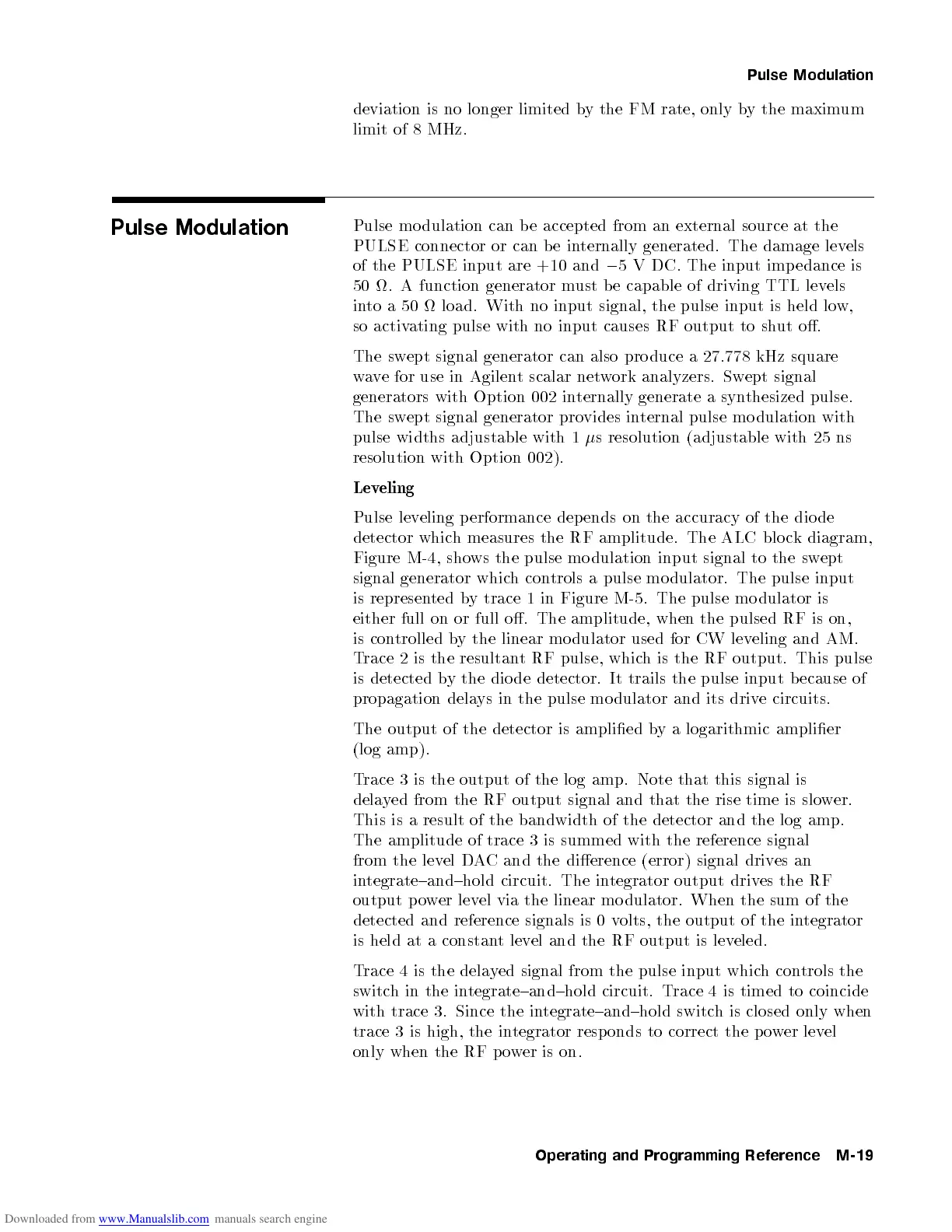